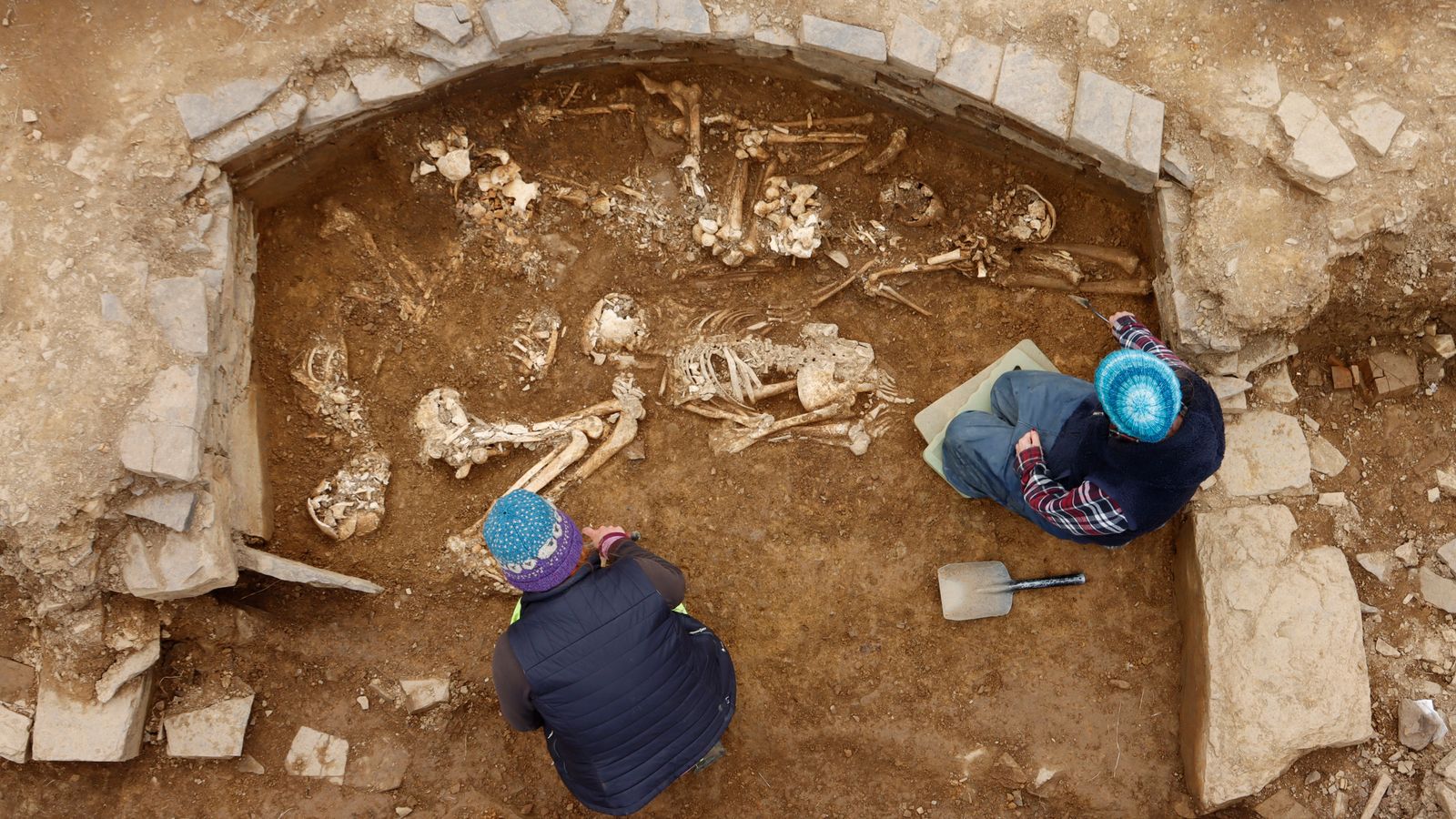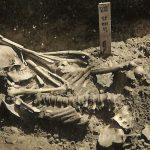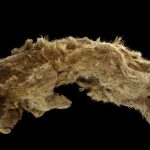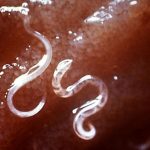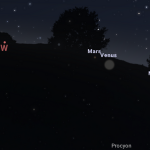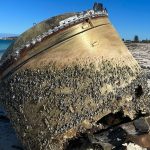Archaeologists have discovered the ruins of an “incredibly rare” 5,000-year-old tomb in Orkney.
Fourteen articulated skeletons of men, women and children were unearthed at the Neolithic site at Holm on the mainland.
Experts from National Museums Scotland (NMS) and Cardiff University also uncovered additional human bones following a search for the tomb’s precise location.
Volunteers and students from the University of Central Lancashire made other discoveries during the three-week excavation, including finding further remains, pottery, stone tools and a bone pin.
NMS said the Neolithic site had been buried beneath a pasture field after it had been largely destroyed without record in the late 18th or early 19th century to supply building stone for a nearby farmhouse.
In 1896, the farmer’s son found eight skeletons at the site alongside traces of walling, a stone macehead and ball.
The Orcadian’s report on the discovery featured local antiquary James Walls Cursiter, who speculated that the site was a ruined tomb – which prompted the location of the 2023 search.
Skelmorlie’s Pennywise-style clown is back with a ‘message and a game for the nation’
Mohammed Ahmed: Rapist who attacked nine-year-old girls when he was 12 gets lighter sentence due to his ‘immaturity’
Officers searching for man trapped in vehicle in floodwater recover body, Police Scotland say
The excavation was led by Dr Hugo Anderson-Whymark, of NMS, and Professor Vicki Cummings, of Cardiff University.
It targeted anomalies recorded via a geophysical survey undertaken in 2021.
It revealed traces of a cairn more than 15m in diameter, which contained a stone structure accessed through a 7m-long passage.
The archaeologists said a stone chamber lay at the centre of the cairn, and this was surrounded by six smaller side cells that once had corbelled stone roofs.
These features allow the tomb to be classed as a “Maes Howe-type” passage grave.
Only 12 tombs of this type are known in Orkney – including Maes Howe, Cuween and Quoyness – and are considered the “pinnacle of Neolithic engineering” in northern Britain.
Read more from Sky News:
Archaeologists in Egypt unearth Sphinx-like statue and shrine
Dig at Hadrian’s Wall to reveal details about life on the Roman frontier
Be the first to get Breaking News
Install the Sky News app for free
Dr Anderson-Whymark said: “Orkney is exceptionally rich in archaeology, but we never expected to find a tomb of this size in a such a small-scale excavation.
“It’s incredible to think this once impressive monument was nearly lost without record, but fortunately just enough stonework has survived for us to be able understand the size, form and construction of this tomb.”
Professor Cummings added: “The preservation of so many human remains in one part of the monument is amazing, especially since the stone has been mostly robbed for building material.
“It is incredibly rare to find these tomb deposits, even in well-preserved chambered tombs, and these remains will enable new insights into all aspects of these peoples’ lives.”
